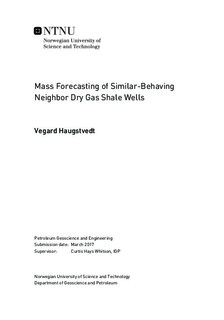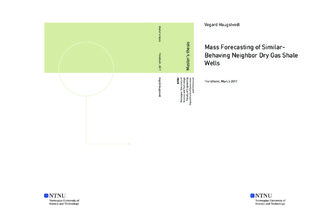| dc.description.abstract | Shale gas production in the US is steadily increasing. With the increase in drilled production wells comes the increased demand for reliable and cost-effective well production forecasts.
Decline curves like the Arps (1945) rate equation is frequently applied to shale wells for forecasting purposes. However, due to the ultra-low rock permeabilities in unconventional wells, one may experience an absence of depletion type flow during a well history. This leads to the curve-fitting of transient data, which can yield unreasonably positive production forecasts.
History matching of wells to numerical models using reservoir simulators is considered perhaps to be the most reliable and effective tool for shale well production forecasting, provided that enough information on the reservoir, fluid and completion is at hand. This method is widely used, but neglected by some, due to the cost, time and information that is needed to perform the procedure.
The purpose of this work has been to combine the two concepts, by proposing a workflow that can yield reliable forecasts at a relatively low cost and that requires only information on rates and tubing pressures for most wells. This thesis tests a procedure that forecasts multiple neighboring, similarly-completed shale gas wells with the signature of a single, representative, history matched well.
Specifically, a unique group behavior is identified by observing well signatures in a log-log plot of pseudo-pressure drawdown normalized rate versus material balance time, and in a Specialized linear flow plot, along with historical production and pressure plots. A unique group behavior is identified by identifying similar flow regimes, their duration and overall well behavior. A representative well of the group is subsequently forecasted with a history-matched numerical model. The forecast signature of the pseudo-pressure drawdown normalized rate derivative with respect to material balance time is applied to the remaining wells and adjusted to follow the historical data trajectory. A group of five real, similarly performing wells is examined and forecasted with the procedure. The forecast results are compared to the forecasts of each wells unique history matched model for comparison.
The procedure succeeds in producing reasonable forecasts for the entire group, and all results are close to the respective history matched model forecasts.
iv
The study is in its essence empirical and the number of wells examined is limited to five. A broader study comprising more wells is suggested for future work. Further, quantifying how much the well, reservoir and completion parameters in the group can differ, while still produce reasonable forecasts with the procedure, is another interesting problem and not investigated in this work. | |

